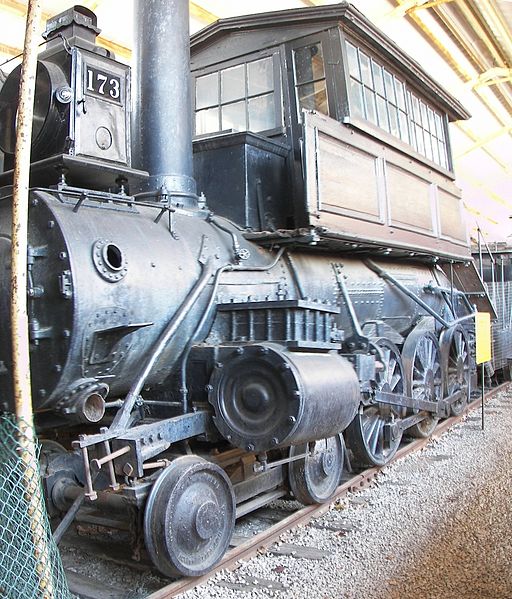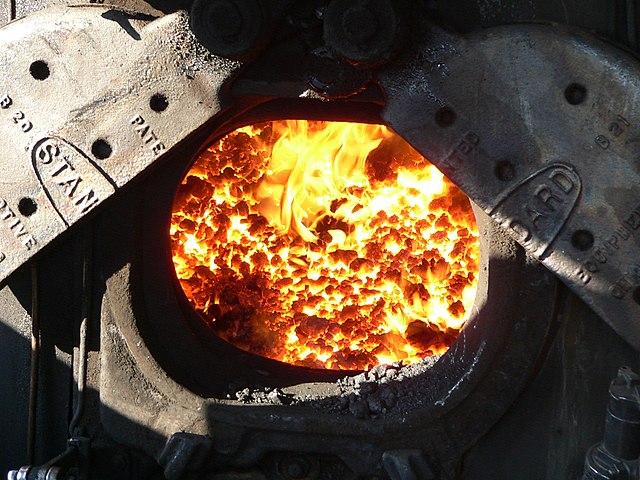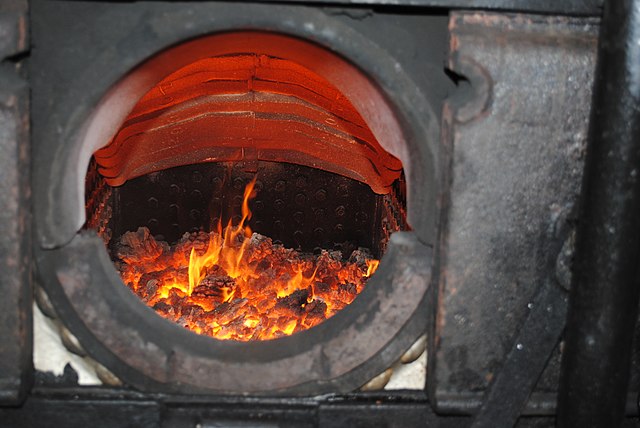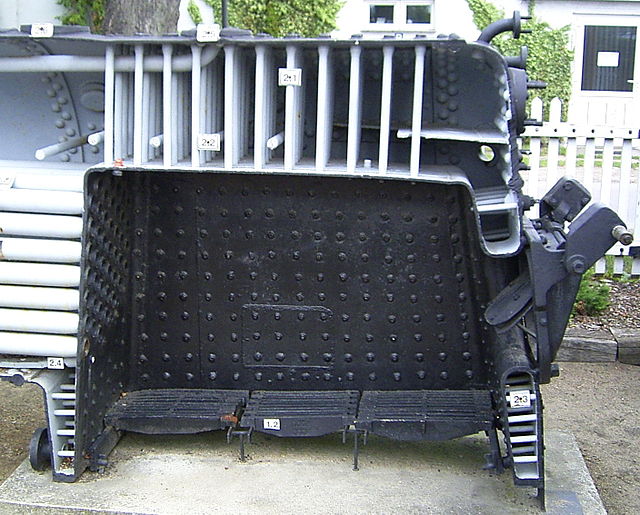A camelback locomotive is a type of steam locomotive with the driving cab placed in the middle, astride the boiler. Camelbacks were fitted with wide fireboxes which would have severely restricted driver visibility from the normal cab location at the rear.
The Erie Railroad's L-1 class were the largest camelbacks built, and the only articulated examples.
A 4-6-0 camel built by the Baltimore & Ohio Railroad in 1869, housed at the National Museum of Transportation
A 4-8-0 camel, (probably the very first 4-8-0) Centipede as built in 1855 (below), and as modified for the B&O Railroad in 1864 (above). Note the sloping firebox.
A 4-6-0 camelback built for the Central Railroad of New Jersey by the Baldwin Locomotive Works
In a steam engine, the firebox is the area where the fuel is burned, producing heat to boil the water in the boiler. Most are somewhat box-shaped, hence the name. The hot gases generated in the firebox are pulled through a rack of tubes running through the boiler.
The firedoor into the firebox of a steam locomotive. The firebox peak temperature is approximately 2,500 °F (1,370 °C)
Firebox of a GWR 6959 Class steam locomotive, showing the underside of the brick arch, constructed from specially-shaped firebricks.
Empty firebox of a Baureihe 52, showing the brick arch
Cutaway of locomotive firebox and boiler with radial stays








